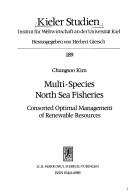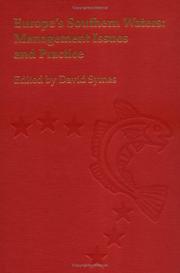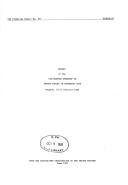| Listing 1 - 10 of 9050 | << page >> |
Sort by
|

ISBN: 3163448844 9783163448841 9783163448858 3163448852 Year: 1984 Publisher: Tübingen: Mohr,
Abstract | Keywords | Export | Availability | Bookmark
 Loading...
Loading...Choose an application
- Reference Manager
- EndNote
- RefWorks (Direct export to RefWorks)
Book
ISBN: 0804717907 Year: 1990 Publisher: Stanford (Calif.) : Stanford university press,
Abstract | Keywords | Export | Availability | Bookmark
 Loading...
Loading...Choose an application
- Reference Manager
- EndNote
- RefWorks (Direct export to RefWorks)

Abstract | Keywords | Export | Availability | Bookmark
 Loading...
Loading...Choose an application
- Reference Manager
- EndNote
- RefWorks (Direct export to RefWorks)
Book
Year: 2004 Publisher: Copenhagen : Nordic Council of Ministers,
Abstract | Keywords | Export | Availability | Bookmark
 Loading...
Loading...Choose an application
- Reference Manager
- EndNote
- RefWorks (Direct export to RefWorks)
Oil spills at sea are a potential consequence of use and transportation of oil. If marine areas are polluted by oil spills, seafood, including farmed seafood in the area is likely to be contaminated too. Oil pollution may give an off-taste in and taint of seafood, and the chemicals e.g. PAH in the oil may present a safety risk to the consumer of contaminated seafood. The risk depends on many factors described in the report like fish species, behaviour, background level of contaminants in the seafood etc. The risk analysis process and a Nordic model for a stepwise risk analysis procedure are used as a structured approach to PAH from an imaginary oil spill at a location in the sea between Denmark, Norway and Sweden. The risk analysis starts with the risk management followed by risk assessment. In the risk assessment, data on the PAH content in seafood and intake of seafood in some of the Nordic countries are used. In the next steps of the risk management, the available management options are discussed, including the advantages and disadvantages of the available options. Quite much knowledge is available about oil spills and their effects on seafood. The report includes some of this information relevant for the project and the networks involved. Finally, the report lists proposals and recommendations for the emergency response and seafood safety and for the future research needs. Risk analysis of the effect of oil spills on seafood would in practise often be conducted under pressure, and therefore the report highlights the need for further data and for networks as part of an emergency response plan.
Book
ISBN: 0191822205 0191081604 Year: 2020 Publisher: New York, New York : Oxford University Press,
Abstract | Keywords | Export | Availability | Bookmark
 Loading...
Loading...Choose an application
- Reference Manager
- EndNote
- RefWorks (Direct export to RefWorks)
Book
Year: 1976 Publisher: Rome Food and Agriculture Organization of the United Nations
Abstract | Keywords | Export | Availability | Bookmark
 Loading...
Loading...Choose an application
- Reference Manager
- EndNote
- RefWorks (Direct export to RefWorks)
Book
Year: 2011 Publisher: Woods Hole, Mass. : U.S. Dept. of Commerce, National Oceanic and Atmospheric Administration, National Marine Fisheries Service, Northeast Fisheries Science Center,
Abstract | Keywords | Export | Availability | Bookmark
 Loading...
Loading...Choose an application
- Reference Manager
- EndNote
- RefWorks (Direct export to RefWorks)
Book
Year: 1980 Publisher: Woods Hole, Mass. : U.S. Dept. of Commerce, National Oceanic and Atmospheric Administration, National Marine Fisheries Service, Northeast Fisheries Center,
Abstract | Keywords | Export | Availability | Bookmark
 Loading...
Loading...Choose an application
- Reference Manager
- EndNote
- RefWorks (Direct export to RefWorks)

Abstract | Keywords | Export | Availability | Bookmark
 Loading...
Loading...Choose an application
- Reference Manager
- EndNote
- RefWorks (Direct export to RefWorks)
Book
Year: 2010 Publisher: Washington : U.S. G.P.O.,
Abstract | Keywords | Export | Availability | Bookmark
 Loading...
Loading...Choose an application
- Reference Manager
- EndNote
- RefWorks (Direct export to RefWorks)
| Listing 1 - 10 of 9050 | << page >> |
Sort by
|

 Search
Search Feedback
Feedback About UniCat
About UniCat  Help
Help News
News